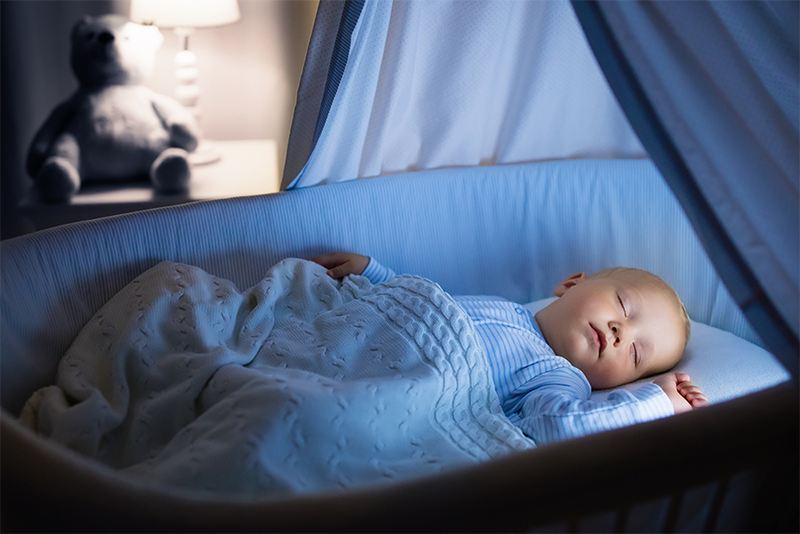
26 Apr Sleep Training 101
3 min. readEvery child, especially babies and young children—need a lot of sleep. Quality sleep is essential to your baby’s health, growth and development. However, most little ones aren’t able to get the sleep that they need.
Sleep training is very difficult for many parents—however, sleep training is essential in order for little ones (and parents) to get the sleep that they need. Here are a few of the biggest cornerstones of sleep training that every parent needs to know.
When Is It Time to Start Sleep Training?
Most sleep-deprived parents will want to start sleep training right away, but there is a thing as trying too soon. Typically, somewhere around 4-6 months, your baby will start to have a regular nap schedule. Once your baby is regular with their daytime naps, it can be time to start with nighttime sleep training.
There are a few different types of sleep training methods—no matter which one you choose, you need to stay consistent with your child so they develop consistent sleep habits. There is no right or wrong way, it’s what works best for your family. Here are some common methods below.
The Cry It Out Method
The Cry It Out Method is one of the most talked about approaches out there and it comes from Mark Weissbluth’s book Healthy Sleep Habits, Happy Child.
Here’s how it works:
- Once your baby is awake but feeling drowsy when you put them down, you leave the room and don’t go back. (Unless of course there is an emergency).
- Many times babies will cry for as long as an hour in the first few nights.
The goal is to show your baby that crying won’t necessarily mean mom and dad come back, and it will encourage them to get to sleep on their own. Their first few nights are really important, but typically within a week, most babies “get it” and start falling asleep faster and staying asleep better.
The Ferber Method
This method should not be confused with the Cry It Out Method, where you don’t ever go back into the room. Instead, you gradually increase the amount of time you let your baby “cry” it out. On the first night, you go back after 3 minutes, then 5 minutes, then 15 and on and on, waiting longer and longer before you come in and check on your baby.
The good news is, while it is hard for some parents to hear their children cry—most parents see better sleep results within a few nights.
The No Cry Method of Sleep Training
There are many parents who will not let their babies cry as their baby falls asleep. There are a lot of the old standby tips involved with this technique, such as making the room dark and establishing a bedtime routine.
However, the biggest cornerstone of this program is to put your baby down when he or she is drowsy but awake, then pick him up if they cry, and set them back down once your baby is drowsy again. You simply complete the process until your baby falls asleep.
Different parents will relate more to different sleep training methods—and no matter which you choose, you simply need to stay consistent to see results.
If you have questions about sleep training, contact Continuum Pediatrics today. We are here to help with this transition to make sure that your child is getting the sleep that they need each and every night. Simply call 817-617-8600 to make an appointment today.

